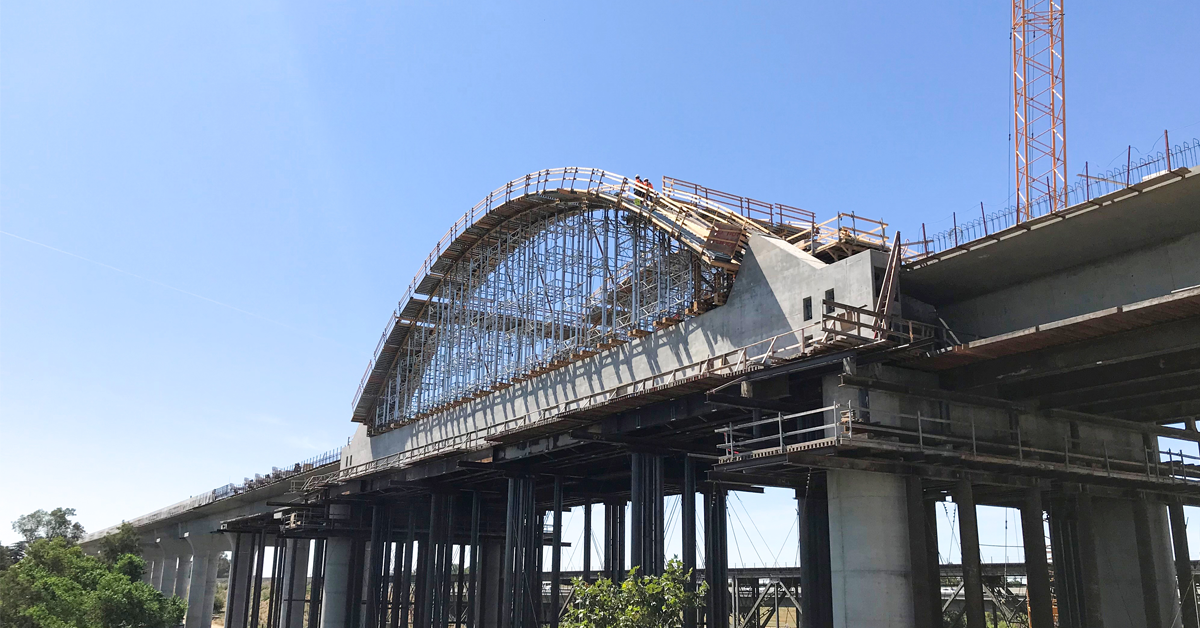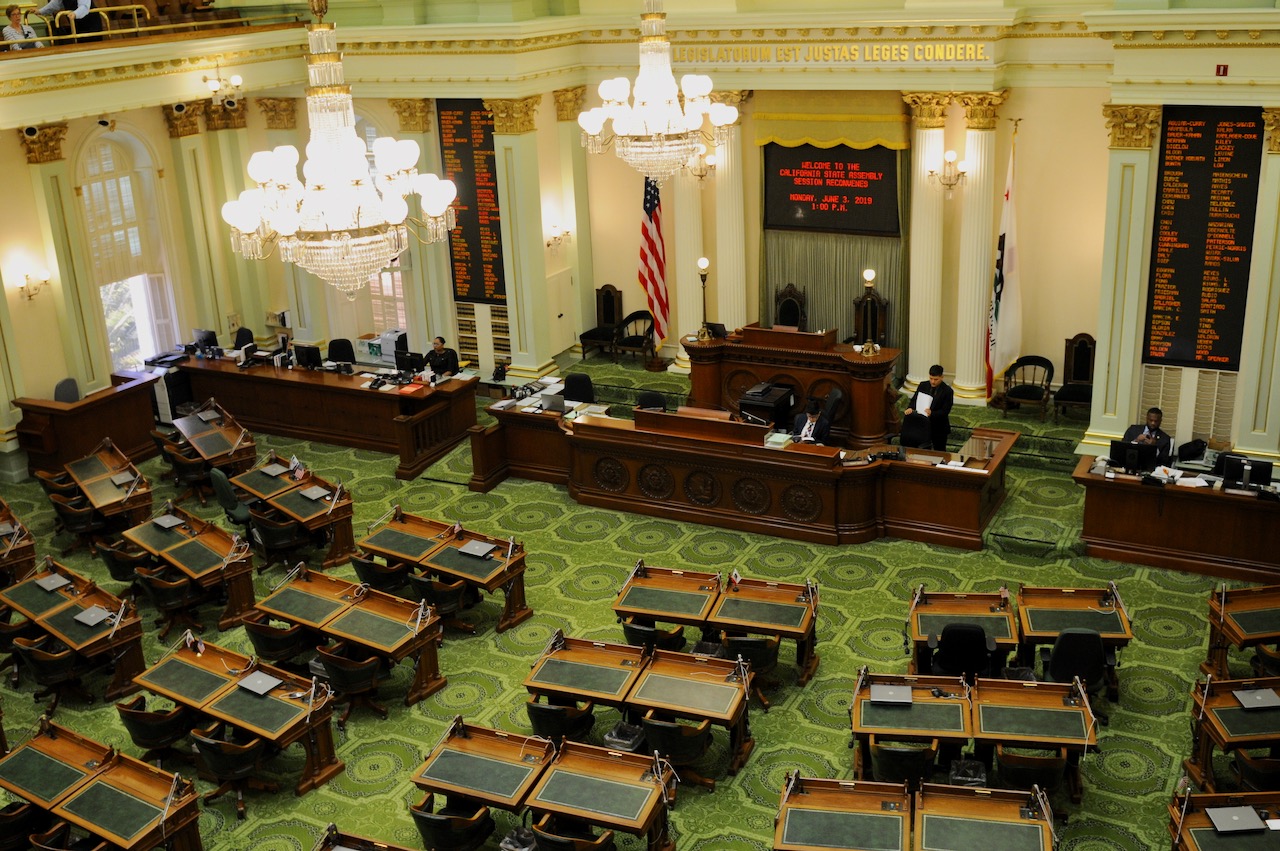
The Road 27 Bridge under construction in Madera. (Photo: Youtube)
Finding Common Ground in California on Environmental Regulations and Infrastructure Investment
It shouldn’t be controversial to restrict discussions of infrastructure to infrastructure
By Edward Ring, October 18, 2021 2:15 am
In California, environmental regulations have brought infrastructure investment to a standstill. Without expanding energy, water, and transportation infrastructure, it is nearly impossible to build housing, the cost-of-living is punitive, water is rationed and food is overpriced, the overall quality of life is reduced, and money that ought to be paying skilled workers to operate heavy construction equipment instead goes into the pockets of environmentalist lobbyists, bureaucrats, litigators, and activist nonprofits.
Californians nonetheless agree that infrastructure, as it is traditionally defined, needs new investment. Freeways, bridges, railroads, dams, aqueducts, seaports, airports, transmission lines, pipelines; all of this needs to be maintained and upgraded.
Press play to hear a narrated version of this story, presented by AudioHopper.
But despite agreement on the goal, more than ever, solutions are filtered through the lens of polarizing ideologies. What is today’s definition of infrastructure? Is it physical assets, or something more ephemeral? Do infrastructure priorities have to be established based on restoring race and gender equity, or by concerns about climate change? Should some infrastructure be deliberately allowed to deteriorate, to avoid “induced demand” and the unsustainable consumption that would result?
Debate over these questions has paralyzed California’s politicians. Navigating a pathway out of this paralyzing morass takes more than just compromise, it takes the courage to adhere to controversial premises. Chief among these is to reject the idea that legislated scarcity is the only option to combat climate change. In every critical area of infrastructure there are solutions that can enable a future of sustainable abundance.
For example, Californians can rebuild their energy infrastructure in a manner that doesn’t violate environmentalist principles, but instead balances environmentalist concerns with the interests of its residents.
Why aren’t Californians, who in so many ways are the most innovative people in the world, approving and building safe, state-of-the-art nuclear power plants? Why aren’t they developing geothermal power, since California has vast untapped potential in geothermal energy? Why haven’t California’s legislators revived the logging industry they have all but destroyed, and brought back clean power plants fueled by the biomass of commercial forest trimmings?
Californians can also rebuild their water infrastructure by adopting an all-of-the-above-approach. They can build massive new off-stream reservoirs to capture storm runoff. Even in dry winters the few storms that do hit California yield surplus water that can be captured instead of allowed to runoff into the Pacific. These off-stream reservoirs could also feature forebays from which, using surplus solar electricity, water could be pumped up into the main reservoir, to then be released back down into the forebay through hydroelectric turbines to generate electricity when solar electric output falters. Why aren’t Californians recycling 100 percent of their urban wastewater? Why aren’t they building desalination plants?
These are solutions that may not be perfectly acceptable to environmentalists, but they’re also not hideous violations of environmentalist values. They should be defended by their proponents without reservations, but also with a willingness to spend extra to mitigate what can be mitigated. Civilization has a footprint, and we can only pick our poison. The solutions favored by environmentalists, such as wind turbines, battery farms, EVs, biofuel plantations, and solar farms, have environmental impacts that are arguably even worse than conventional solutions.
Another potentially polarizing issue – achieving “equity” with infrastructure – doesn’t have to be dismissed by proponents of practical infrastructure investment. If the pipes in Los Angeles public schools are still leaching toxins into the water students would otherwise be drinking, then invest the money and fix the pipes. If inadequate funding for water treatment plants in low income communities in California’s Central Valley mean they are not operating, or cannot expand their operations, then increase the funding. But at the same time don’t lose sight of the fact that if there is more energy, and more water, that will benefit everyone, especially low income households, no matter where they are and no matter what other challenges they may confront.
Finally, it shouldn’t be controversial to restrict discussions of infrastructure to infrastructure, but it is. Here is an area where, once again, establishing the terms of the discussion require adhering to a controversial premise, which is that discussions of “infrastructure” need to be restricted to the traditional definition. Basic infrastructure, offering surplus capacity instead of scarcity in the critical areas of energy, water and transportation, creates the solid foundation upon which all the other amenities of a prosperous and equitable society may flourish.
- Ringside: Will the Delta Pumps Operate at Capacity this Winter? - December 18, 2025
- Ringside: Will Advocates for More Water Supply Projects Find Unity? - December 11, 2025
- Ringside: EVs and California’s Future Demand for Electricity - December 4, 2025





There is no common ground you can have with environmentalists unless you off yourself. This type of thinking got us were we are today.
This article illustrates what is wrong with Republicans. The left dangles a carrot offering something and right before you get it they whack you on the head with a club and move the goal posts out another mile or two. Until people recognize that the goal of the left is no energy at all except for the Pelosi/Newsom, Obama and Soros elites we will never have rational solutions.